Pyrethrins
- CAS NO.:8003-34-7
- Empirical Formula: C43H56O8
- Molecular Weight: 700.9
- MDL number: MFCD00078611
- EINECS: 232-919-8
- SAFETY DATA SHEET (SDS)
- Update Date: 2025-12-17 09:49:33
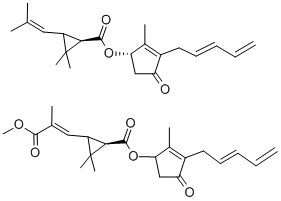
What is Pyrethrins?
Description
Pyrethrins/Pyrethrum are natural insecticides produced by certain Chrysanthemum species of plants. In contrast, Permethrin (‘per-meth-rin’) is a synthetic, man-made insecticide, whose chemical structure is based on natural pyrethrum. Pyrethrum was first recognised as having insecticidal properties around 1800 in Asia and was used to kill ticks and various insects such as fleas and mosquitoes. Six individual chemicals have active insecticidal properties in the pyrethrum extract, and these compounds are called pyrethrins. Pyrethrum are viscous, tan-coloured brown resins, liquids, or solids which inactivate readily in air. Pyrethrum are soluble in organic solvents such as alcohol, kerosene, nitromethane, petroleum ether, carbon tetrachloride, and ethylene dichloride. A quick acting liquid insecticide especially suited for control of insect pests of vegetables, ornamentals, and exotic crops. The piperonyl butoxide ingredient is used to enhance the activity of the permethrin (synergist).
Pyrethrum has been used effectively to control insects for decades and is nonpersistent, decomposing rapidly in the environment. This rapid degradation of pyrethrum has resulted in little known cases of insect resistance, making it an excellent choice for the control of agricultural pests, control of insects on pets and/or livestock. Pyrethrum powder is toxic to ants, roaches, silverfish, bed bugs, fleas, wasps, spiders, crickets, mosquitoes, and just about every other category of unwanted house or garden pest. Because it decomposes rapidly in the environment, pyrethrum has been approved for a wide range of indoor and outdoor uses, including homes, restaurants, broad-scale spraying operations, and organic farms.

Pyrethrins break down quickly in the environment, especially when exposed to natural sunlight. Pyrethroids are manufactured chemicals that are very similar in structure to the pyrethrins, but are often more toxic to insects, as well as to mammals, and last longer in the environment than pyrethrins. Pyrethrins and pyrethroids are often combined commercially with other chemicals called synergists, which enhance the insecticidal activity of the pyrethrins and pyrethroids. The synergists prevent some enzymes from breaking down the pyrethrins and pyrethroids, thus increasing their toxicity. Technical-grade (concentrated) pyrethrins and pyrethroids are usually mixed with carriers or solvents to produce a commercial-grade formulated product.
Chemical properties
Pyrethrum is a brown, viscous oil or solid. Oxidizes readily in air. Insoluble in water; soluble in other common sol- vents. Incompatible with alkalies.
Chemical properties
Pyrethrum , derived from extracts of the Chrysanthemum cinerariaefolinum plant, is a combination of six pyrethrin isomers, namely, pyrethrin 1, pyrethrin 2, cinerin 1, cinerin 2, jasmolin 1, and jasmolin 2. Pyrethroids are synthetically derived commercial compounds similar to pyrethrum. Pyrethrins and pyrethriods are insoluble in water and have a low vapor pressure. Pyrethrum is subject to photodegradation and is oxidized rapidly in the presence of air (U.S. EPA, 2006c; ATSDR, 2003).
The Uses of Pyrethrins
Pyrethrins are used to kill a number of different flying and crawling insects and arthropods. First registered in the 1950s, currently over 1350 end-use products containing pyrethrins are available for agricultural, commercial, residential, and public health areas. They are used as household insecticides, as grain protectants, and to control pests on edible products just prior to harvest in a variety of locations, including residential, public, and commercial buildings, animal houses, warehouses, fields, and green houses. Pyrethrins are also extensively used in the field of veterinary medicine (U.S. EPA, 2006c; ATSDR, 2003).
Commercially available pyrethroids include allethrin, bifenthrin, bioresmethrin, cyfluthrin, cyhalothrin, cypermethrin, deltamethrin, esfenvalerate (fenvalerate), flucythrinate, flumethrin, fluvalinate, fenpropathrin, permethrin, phenothrin, resmethrin, tefluthrin, tetramethrin, and tralomethrin.
The Uses of Pyrethrins
Household insecticide (flies, mosquitoes, gar- den insects, etc.).
The Uses of Pyrethrins
Pyrethrum is used to control a wide range of insects and mites in public health, stored products, animal houses and on domestic and farm animals. It is used on glasshouse crops but has relatively limited use on field crops, vegetables and fruit. It is normally used with synergists such as piperonyl butoxide which inhibits metabolic detoxification.
Definition
Pyrethrolone ester of chrysanthemummonocarboxylic acid. Most potent insecticidal ingredient of pyrethrum flowers.
Indications
Pyrethrins, rapid-acting compounds, derived from chrysanthemum plants, are the leading over-the-counter louse remedy. These compounds interfere with neural transmission, leading to paralysis and death. Piperonyl butoxide (PBO) potentiates the pyrethrins by inhibiting the hydrolytic enzymes responsible for pyrethrin metabolism in arthropods.
Air & Water Reactions
Oxidize relatively rapidly in air. Water emulsifiable.
Reactivity Profile
PYRETHRINS decompose rapidly in base; may generate heat with caustic solutions. May also react with acids to liberate heat. Generate flammable hydrogen with alkali metals and hydrides.
Hazard
Toxic by ingestion and inhalation.
Health Hazard
Pyrethrum dust causes dermatitis
and occasionally sensitization.The primary effect in humans from exposure
to pyrethrum is dermatitis. The usual
lesion is a mild erythematous dermatitis with
vesicles, papules in moist areas, and intense
pruritis; a bullous dermatitis may develop.
Some persons exhibit sensitivity similar to
pollinosis, with sneezing, nasal discharge, and
nasal stuffiness.2 A few cases of asthma due to
pyrethrum mixtures have been reported; some
of the people involved had a previous history
of asthma with allergy to a wide spectrum of
substances.
Fire Hazard
Some may burn but none ignite readily. Containers may explode when heated. Some may be transported hot.
Pharmacology
The chrysanthemates (pyrethrin I, cinerin I, and jasmolin I) are generally more potent for insecticidal kill, whereas the pyrethrates (pyrethin II, cinerin II, and jasmolin II) cause more rapid knockdown. When combined with synergists, the pyrethrins are effective at low doses in causing knockdown and kill of a wide variety of pests. Pyrethrins exert their effects primarily by acting on sodium channels in nerves to disturb nerve conductance . Two distinct effects, referred to as type I and type II, have been defined for pyrethrins.
Clinical Use
Because of the high cost and rapid degradation of the pyrethrins, they usually are combined with piperonyI butoxide, a synergist. PiperonyI butoxide has no insecticidal activity in it own right but is thought to inhibit the cytochrome P450 enzyme of the insect, thus preventing an oxidative inactivation of the pyrethrins by the parasite. The combination is used in a 10:1 ratio of . piperonyl butoxide to pyrethrins. The mixture is used for treatment of Pedicul us humanus capitis, Pediculus humanus corporis, and Phthir'us pubis. Various dosage forms are available, including a gel, shampoo, and topical solution.
Potential Exposure
Pyrethrins are used as an ingredient of various contact insecticides. Those engaged in the isolation, formulation, or application of these materials.
Environmental Fate
If released to air, the relatively low vapor pressure indicates that the pyrethrins and pyrethroids will exist in both the vapor and particulate phases in the atmosphere. Vapor-phase compounds are rapidly degraded by direct photolysis and by reaction with photochemically produced hydroxyl radicals and ozone; the half-lives for these reactions in air are estimated to be 1.3 h and 17 min, respectively. Particulates may travel long distances and are removed from the atmosphere by wet or dry deposition (HSDB, 2013; ATSDR, 2003). Pyrethrins and pyrethroids are strongly adsorbed to the soil surfaces so they are not expected to be mobile. The compounds also strongly adsorb to suspended solids and sediment in the water column. Thus, partitioning to solids attenuates volatilization from soil and water surfaces. Pyrethrins and pyrethroids are often used indoors in sprays or aerosol bombs, and the volatilization rates from glass or floor surfaces may be significantly faster than from soils since these compounds are not likely to adsorb as strongly to these surfaces (ATSDR, 2003). These insecticides are readily biodegraded by microorganisms.
Pyrethrins and pyrethroids bioconcentrate in aquatic organisms, including fish, oysters, and insects. The bioconcentration factor for several commercial products in three species of fish ranged from 180 to 1200 depending on the amount of dissolved organic matter in the water column (ATSDR, 2003).
Metabolic pathway
Each year about 200,000 kg of pyrethrins are used as a crop insecticide,
much of it in enclosed conditions, and in public and animal health. Its
effectiveness outdoors is limited by the high photo-instability of its components.
This factor, and the great complexity of the mixture, has limited
studies on its metabolic fate. The environmental fate of pyrethrum has
been the subject of an excellent review by Crosby (1995). He points out
that, in spite of its still quite wide use, the environmental fate of its components
is largely unknown. The review deals with transport processes
(partitioning, volatilisation, adsorption, etc.), photochemical and chemical
degradation and environmental biotransformation (soil and water) as
predicted from the limited amount of data on the pure components and
that obtained for the closely related synthetic analogues, e.g. the
allethrins, phenothrin and the resmethrins. This is a valuable paper by
one of the foremost scientists in the field. The fates of the chrysanthemic
acid moiety and of the synthetic alcohol moieties of similar structure to
those in the natural pyrethrins (e.g. allethrolone) are considered to be
useful models for the fate of pyrethrin. The pyrethrin I series (chrysanthemate
esters) appears to have higher partition coefficients, bioconcentration
factors, volatility and soil adsorption, but lower aqueous solubility
than does the pyrethrin II series (pyrethrate esters). This suggests that
pyrethrin I (PI), cinerin I (CI) and jasmolin I (JI) may be more readily
transported in the environment.
Photodegradation and biotransformation should be very rapid for both
series. The limited experimental evidence given below supports these
predictions.
The best mformation is available for animals and most of the infomation
given below is derived from in vitro studies using rodent liver microsomes.
The constituents of pyrethrum appear to differ from the synthetic
pyrethroids in being relatively resistant to metabolic hydrolysis. Metabolism
is mainly via hydroxylation and elimination after conjugation.
Shipping
UN2902 Pesticides, liquid, toxic, n.o.s., Hazard Class: 6.1; Labels: 6.1-Poisonous materials, Technical Name Required.
Degradation
Pyrethrum is stable for years in the dark at ambient temperature. In light,
rapid photo-oxidation occurs with a DT50 in sunlight of ﹤15 minutes.
Hydrolysis to the component acids and alcohols occurs under basic
conditions.
Exposure to sunlight (Ruzo, 1982) affords a complex mixture of
products which is insecticidally inactive. Reactions include isomerisation,
hydrolysis and oxidation. Products derived from the photomodification
of the chrysanthemic acid moiety of pyrethrin I (PI) (Chen
and Casida, 1969) include the analogues of those described under phenothrin. Simultaneous reactions at the alcohol moieties lead to very
complex mixtures of products.
Toxicity evaluation
The pyrethrins have low toxicity to mammals, and death after exposure to pyrethrins is rare. Their lability in light and air leads to a lack of residual activity and the need for repeated applications. This has restricted the use of the natural pyrethrins in the animal health sector.
Incompatibilities
Incompatible with oxidizers (chlorates, nitrates, peroxides, permanganates, perchlorates, chlorine, bromine, fluorine, etc.); contact may cause fires or explo- sions. Keep away from alkaline materials, strong bases, strong acids, oxoacids, epoxides. Compounds of the car- boxyl group react with all bases, both inorganic and organic (i.e., amines) releasing substantial heat, water and a salt that may be harmful. Incompatible with arsenic com- pounds (releases hydrogen cyanide gas), diazo compounds, dithiocarbamates, isocyanates, mercaptans, nitrides, and sulfides (releasing heat, toxic and possibly flammable gases), thiosulfates and dithionites (releasing hydrogen sul- fate and oxides of sulfur).
Properties of Pyrethrins
| Density | 0.84-0.86 g/cm3 |
| vapor pressure | 2.7×10-3 (pyrethrin I) and 5.3×10-5
(pyrethrin II) Pa |
| refractive index | n |
| Flash point: | 75 °C |
| storage temp. | 2-8°C |
| solubility | Chloroform: Slightly Soluble; Methanol: Slightly Soluble |
| form | neat |
| Water Solubility | 0.2 (pyrethrin I) and 9 (pyrethrin II) mg l-1
(ambient temp.) |
| Stability: | Light Sensitive |
| EPA Substance Registry System | Pyrethrins (8003-34-7) |
Safety information for Pyrethrins
| Signal word | Danger |
| Pictogram(s) |
 Skull and Crossbones Acute Toxicity GHS06  Environment GHS09 |
| GHS Hazard Statements |
H312:Acute toxicity,dermal H410:Hazardous to the aquatic environment, long-term hazard |
| Precautionary Statement Codes |
P261:Avoid breathing dust/fume/gas/mist/vapours/spray. P273:Avoid release to the environment. P280:Wear protective gloves/protective clothing/eye protection/face protection. P301+P310:IF SWALLOWED: Immediately call a POISON CENTER or doctor/physician. |
Computed Descriptors for Pyrethrins
| InChIKey | VXSIXFKKSNGRRO-YWUDCVDHSA-N |
Pyrethrins manufacturer
New Products
4,4-Difluoropiperidine hydrochloride tert-butyl 9-methoxy-3-azaspiro[5.5]undecane-3-carboxylate Indole Methyl Resin N-Isopropylurea N,N-Dicyclohexylcarbodiimide(DCC) MELDRUMS ACID 5-METHYLISOXAZOLE-4-CARBOXYLIC ACID Magnessium Bis glycinate Zinc ascorbate 1-bromo-2-butyne 2-acetamidophenol 9(10H)-anthracenone Erythrosin B, 4-Piperidinopiperidine 2-((4-morpholinophenylamino) (methylthio) methylene) malononitrile 2,4-dihydroxybenzaldehyde 3-(4-morpholinophenylamino)-5-amino-1H-pyrazole-4-carbonitrile Methyl 2-methylquinoline-6-carboxylate 2,6-dichloro-4-nitropyridine 4-Bromo-2-chlorobenzonitrile 2-(benzylamino)acetic acid hydrochloride 4-(tert-Butoxycarbonylamino)but- 2-ynoic acid 3,4-dihydro-2H-benzo[b][1,4]dioxepine 1-Phenyl-1-cycloprppanecarboxylicacidRelated products of tetrahydrofuran
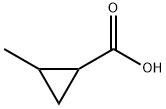
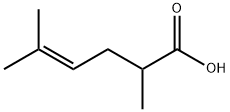

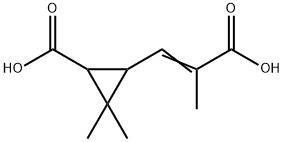
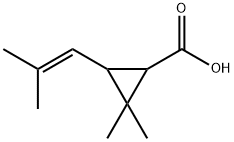
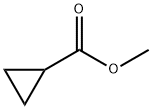


You may like
-
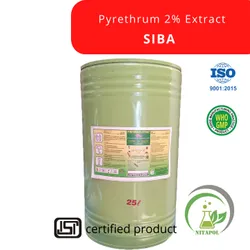 Pyrethrum 2% Extract, Mild Steel DrumView Details
Pyrethrum 2% Extract, Mild Steel DrumView Details
8003-34-7 -
 Pyrethrum 25% Pyrethrum 50% liquid, 1 LView Details
Pyrethrum 25% Pyrethrum 50% liquid, 1 LView Details
8003-34-7 -
 3-(4-amino-1-oxoisoindolin-2-yl)-1-methylpiperidine-2,6-dione 98%View Details
3-(4-amino-1-oxoisoindolin-2-yl)-1-methylpiperidine-2,6-dione 98%View Details -
 614-19-7 98%View Details
614-19-7 98%View Details
614-19-7 -
 20677-73-0 (2,2-diethoxyethyl)methylamine 98%View Details
20677-73-0 (2,2-diethoxyethyl)methylamine 98%View Details
20677-73-0 -
 3-(4-(hydroxyamino)-1-oxoisoindolin-2-yl)piperidine-2,6-dione 98%View Details
3-(4-(hydroxyamino)-1-oxoisoindolin-2-yl)piperidine-2,6-dione 98%View Details -
 57381-49-4 2-bromo-4-chlorobenzonitrile 98%View Details
57381-49-4 2-bromo-4-chlorobenzonitrile 98%View Details
57381-49-4 -
 4,6-dichloropyrimidine-5-carbaldehyde 98%View Details
4,6-dichloropyrimidine-5-carbaldehyde 98%View Details
5305-40-8
